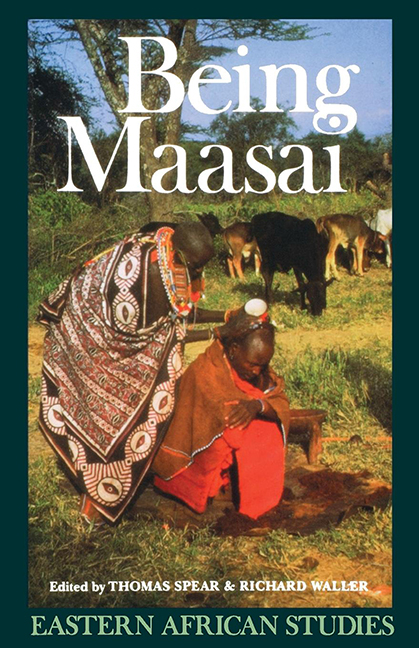Book contents
- Frontmatter
- Contents
- Maps, Figures & Illustrations
- Contributors
- Acknowledgements
- I Introduction
- II Becoming Maasai: Introduction
- III Being Maasai: Introduction
- 7 Becoming Maasai, Being in Time
- 8 The World of Telelia: Reflections of a Maasai Woman in Matapato
- 9 'The Eye that Wants a Person, Where Can It Not See?': Inclusion, Exclusion, and Boundary Shifters in Maasai Identity
- 10 Aesthetics, Expertise, and Ethnicity: Okiek and Maasai Perspectives on Personal Ornament
- IV Contestations and Redefinitions: Introduction
- V Conclusions
- Bibliography
- Index
9 - 'The Eye that Wants a Person, Where Can It Not See?': Inclusion, Exclusion, and Boundary Shifters in Maasai Identity
from III - Being Maasai: Introduction
Published online by Cambridge University Press: 30 August 2017
- Frontmatter
- Contents
- Maps, Figures & Illustrations
- Contributors
- Acknowledgements
- I Introduction
- II Becoming Maasai: Introduction
- III Being Maasai: Introduction
- 7 Becoming Maasai, Being in Time
- 8 The World of Telelia: Reflections of a Maasai Woman in Matapato
- 9 'The Eye that Wants a Person, Where Can It Not See?': Inclusion, Exclusion, and Boundary Shifters in Maasai Identity
- 10 Aesthetics, Expertise, and Ethnicity: Okiek and Maasai Perspectives on Personal Ornament
- IV Contestations and Redefinitions: Introduction
- V Conclusions
- Bibliography
- Index
Summary
Ethnicity & Identity in Context
The term ‘Maasai’ is currently used to mark two different cultural realities, the first being the gamut of Maa-speaking people and groups in East Africa, the second the set of central and primarily pastoral Rift Valley Maa-speaking sections for which the term marks their distinctiveness. The first represents an ‘objective’ notion of ethnicity (that is, the subjectivity of external observation), used to describe the extension of a language and cultural community, such as ‘The Russians’, ‘The Serbo-Croatians’, ‘The Rendille’, or in this case the community which emerged out of the complex process of the Maa expansion. The second, which involves the complex and ‘subjective’ world of ‘ethnic’ politics presented from a particular point of view, is ambiguous, contextually variable and often contested; this is the ethnic usage of ‘White Russians’, Serbs versus Croats, ‘pure laine’ French Canadians, ‘White Rendille’, and Maasai ‘proper’. Barth's (1969: 13) suggestion that ethnicity involves how a group defines its ‘most general identity’ appropriately’ focuses less on the history of linguistic and cultural diffusion and more on an anthropology of signs, used to constitute and delimit boundaries of affinity. What is, of course, culturally problematic and politically at stake is just where the line of ‘most general identity’ should be drawn, and how its content defined. The inclusion and exclusion of individuals and groups tends to be historically contingent, dependent on the context, circumstances, motives and aims of interaction, so ethnicity — as well as other orders of identity — tends, in Cohen's words, to be ‘situational’ (1978: 388).
In the long run, whether a group tends to be ‘inclusive’ or ‘exclusive’ in its subjective interactions will likely influence the growth and spread of a cultural or linguistic community. In East Africa, the Rendille say they ‘sort people out’ and, since ‘they discriminate, segregate and differentiate’, they have ended up a small community (Schlee, 1989: 49). In contrast, the Maasai, and other groups such as the Somali, have tended to be ‘assimilative’ (Waller, 1985a: 367), as the tide of the chapter implies, and this may be one aspect of their historical expansion and growth.
Information
- Type
- Chapter
- Information
- Being MaasaiEthnicity and Identity in East Africa, pp. 174 - 194Publisher: Boydell & BrewerPrint publication year: 1993
